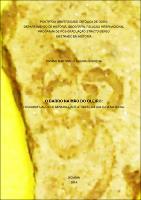| Compartilhamento |


|
Use este identificador para citar ou linkar para este item:
http://tede2.pucgoias.edu.br:8080/handle/tede/3336Registro completo de metadados
| Campo DC | Valor | Idioma |
|---|---|---|
| dc.creator | Nóbrega, Viviane Martins de Moura | - |
| dc.creator.Lattes | http://lattes.cnpq.br/2515175005763357 | por |
| dc.contributor.advisor1 | Reimer, Ivoni Richter | - |
| dc.contributor.advisor1Lattes | http://buscatextual.cnpq.br/buscatextual/visualizacv.do?id=K4700933Y3 | por |
| dc.contributor.referee1 | Souza, Marcos André Torres de | - |
| dc.contributor.referee1Lattes | http://lattes.cnpq.br/5516259765634765 | por |
| dc.contributor.referee2 | Viana, Sibeli Aparecida | - |
| dc.contributor.referee2Lattes | http://lattes.cnpq.br/2161807925273410 | por |
| dc.date.accessioned | 2016-08-10T11:21:41Z | - |
| dc.date.available | 2015-05-18 | - |
| dc.date.issued | 2014-08-18 | - |
| dc.identifier.citation | NÓBREGA, Viviane Martins de Moura. The clay in the potter s hand: representations and sensitivity through material culture.. 2014. 114 f. Dissertação (Mestrado em Ciências Humanas e da Terra) - Pontifícia Universidade Católica de Goiás, GOIÂNIA, 2014. | por |
| dc.identifier.uri | http://localhost:8080/tede/handle/tede/3336 | - |
| dc.description.resumo | Diante das inúmeras possibilidades de discussões, apresentadas pelos vestígios materiais do Sítio Arqueológico Histórico Maria Mendes, localizado no município de Campo Limpo de Goiás, estado de Goiás, foi escolhida para este trabalho a possibilidade que melhor representa o contexto do sítio. A possibilidade de, através da diversidade da decoração impressa na cerâmica do sítio, entender as expressões decorativas como forma de representação sociocultural, agenciadas pelo oleiro, no decurso de sua trajetória de vida, da África para o Brasil, dentro do contexto histórico da Província de Goiás, do início do século XIX. Agenciadas a partir de suas influências, que foram por ele ressignificadas e impressas na cerâmica através de um estilo sensível e criativo. Possiblidade que se divide, a partir do objetivo principal, para também entender os papéis das influências indígenas, africanas e europeias sobre o resultado final do produto do oleiro. Tendo em vista a presença dos signos africanos, pertencentes a grupos diferentes e que ali, no conjunto cerâmico, parecem ter encontrado meios de coexistirem, a identificação de expressões decorativas pertencentes ao povo Guarani em uma área da província de Goiás historicamente ocupada pelo povo Kayapó do Sul, dois grupos culturalmente distintos, tendo em vista também as similaridades entre alguns fragmentos, de pratos e panelas cerâmicas, e as formas e decorações de louças e vasilhas europeias. Esses entendimentos vão ao encontro da forma interdisciplinar de entender a cultura, proposta pelas teorias da História Cultural, que possibilitou um diálogo entre História e Arqueologia, de uma forma menos compartimentada ou limitada ao uso de uma ciência pela outra apenas como fonte. | por |
| dc.description.abstract | Facing the numerous possibilities of discussions, presented by the material traces of the Historical Archaeological Site Maria Mendes, located in Campo Limpo, Goias, it was chosen for this essay the possibility that best represents the context of the site. The possibility of, through the diversity of printed decoration on the site s pottery, understanding the decorative expressions as a form of socio-cultural representation, brokered by the potter, during their life trajectory, from Africa to Brazil, within the historical context of the Province of Goiás, in the early nineteenth century. Brokered from their influences, which have been resignified and printed on ceramic through a sensitive and creative style. Possibility that splits from the main objective, also to understand the roles of indigenous, African and European influences on the end result of the product of the potter. Given the presence of Africans signs, belonging to different groups and there, in the ceramic set, it seems to have found ways to coexist the identification of decorative expressions belonging to the Guarani people in an area of the province of Goias historically occupied by the Kayapo Southern people, two culturally distinct groups, also in view of the similarities between some fragments, ceramic plates and pots, and the forms and decorations of European crockery and vessels. These understandings are against the interdisciplinary way to understand the culture, proposed by the theories of Cultural History, which enabled a dialogue between History and Archaeology in a less compartmentalized way or limited to the use of a science by another one just as a source. | eng |
| dc.description.provenance | Made available in DSpace on 2016-08-10T11:21:41Z (GMT). No. of bitstreams: 1 VIVIANE MARTINS DE MOURA NOBREGA.pdf: 5861500 bytes, checksum: 8c86fffcd0bebee08fb8d44e530ce2ac (MD5) Previous issue date: 2014-08-18 | eng |
| dc.format | application/pdf | por |
| dc.thumbnail.url | http://localhost:8080/tede/retrieve/9889/VIVIANE%20MARTINS%20DE%20MOURA%20NOBREGA.pdf.jpg | * |
| dc.language | por | por |
| dc.publisher | Pontifícia Universidade Católica de Goiás | por |
| dc.publisher.department | Ciências Humanas e da Terra | por |
| dc.publisher.country | BR | por |
| dc.publisher.initials | PUC Goiás | por |
| dc.publisher.program | História | por |
| dc.rights | Acesso Aberto | por |
| dc.subject | História | por |
| dc.subject | Arqueologia | por |
| dc.subject | oleiro | por |
| dc.subject | ressignificação | por |
| dc.subject | sensibilidade | por |
| dc.subject | vestígios | por |
| dc.subject | History | eng |
| dc.subject | Archaeology | eng |
| dc.subject | potter | eng |
| dc.subject | resignification | eng |
| dc.subject | sensibility | eng |
| dc.subject | traces | eng |
| dc.subject.cnpq | CNPQ::CIENCIAS HUMANAS::HISTORIA | por |
| dc.title | O BARRO NA MÃO DO OLEIRO: RESSIGNIFICAÇÕES E SENSIBILIDADE ATRAVÉS DA CULTURA MATERIAL. | por |
| dc.title.alternative | The clay in the potter s hand: representations and sensitivity through material culture. | eng |
| dc.type | Dissertação | por |
| Aparece nas coleções: | Mestrado em História | |
Arquivos associados a este item:
| Arquivo | Descrição | Tamanho | Formato | |
|---|---|---|---|---|
| VIVIANE MARTINS DE MOURA NOBREGA.pdf | 5,72 MB | Adobe PDF |  Baixar/Abrir Pré-Visualizar |
Os itens no repositório estão protegidos por copyright, com todos os direitos reservados, salvo quando é indicado o contrário.




